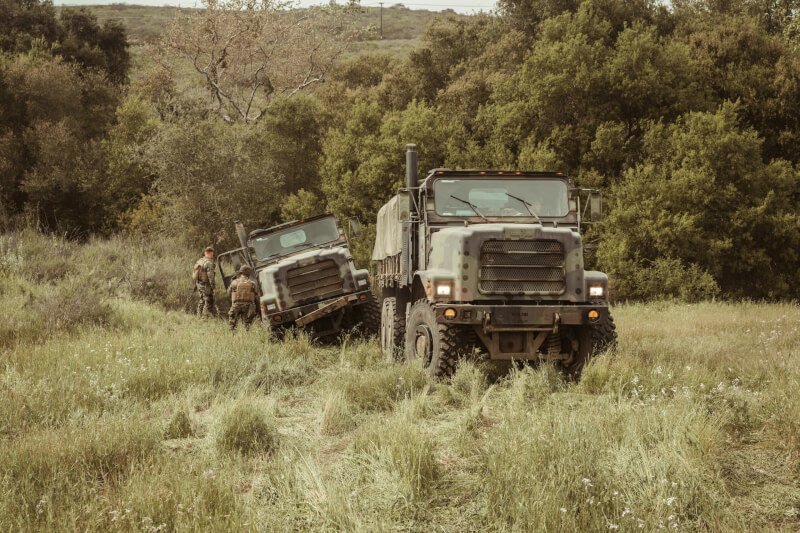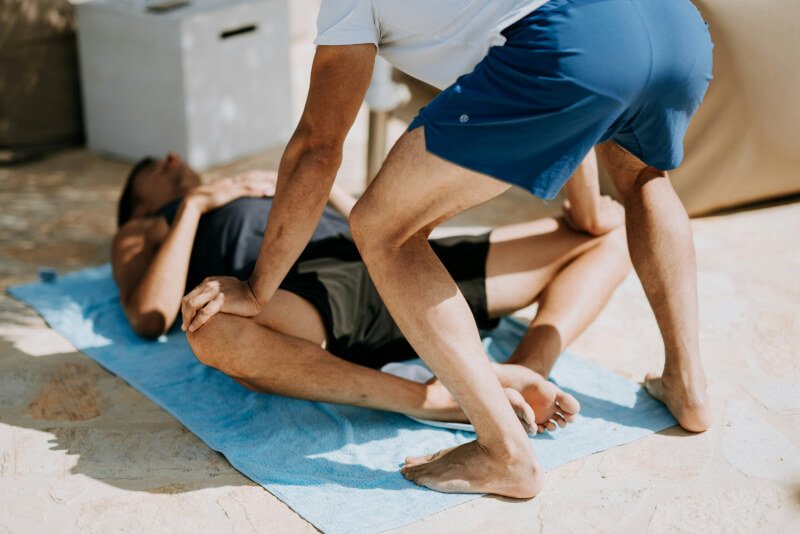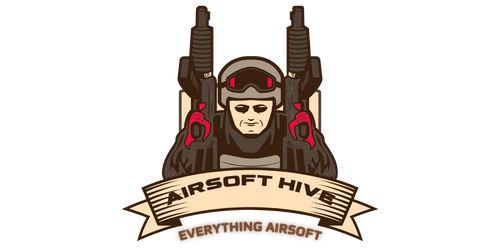In the world of military simulation, the use of airsoft guns has gained popularity for its realism and tactical gameplay. One key strategy that has emerged is the application of Airsoft Rapid Response and QRF (Quick Reaction Force) tactics. These tactics involve quick and strategic responses to unpredictable situations, allowing teams to adapt swiftly and effectively. This article explores the benefits and techniques of utilizing these tactics in airsoft gameplay, providing valuable insights for players looking to enhance their skills and teamwork on the battlefield.

Understanding Airsoft
Airsoft is a thrilling recreational activity that simulates real-life military and tactical operations. Participants use replica firearms that shoot plastic BBs, called airsoft guns, to engage in strategic games. It provides a unique opportunity to experience the adrenaline and teamwork that comes with military operations, without the inherent dangers. Understanding the various aspects of airsoft is crucial for anyone looking to get involved in this exciting hobby.
Overview of Airsoft
In airsoft, players engage in games that typically involve two teams battling against each other. These games can take place in various environments, such as outdoor fields or indoor arenas, and can range from short skirmishes to lengthy missions. The objective can vary depending on the game, but it often involves capturing a flag, defending a specific area, or eliminating opponents. Airsoft guns shoot small plastic BBs that are propelled by compressed gas or electric mechanisms, delivering a non-lethal impact.
Roles and Responsibilities in Airsoft Games
Just like in real military operations, airsoft games require players to take on specific roles that contribute to the effectiveness and success of the team. These roles can include but are not limited to, squad leaders, medics, snipers, and support gunners. Each role has its own responsibilities and specialized equipment, which allows for a diverse and dynamic gameplay experience. Communication and teamwork are essential in coordinating and executing strategies effectively.
Types of Airsoft Games
Airsoft games can be categorized into various types, each with its own unique gameplay elements and objectives. Some common types include team deathmatch, capture the flag, hostage rescue, and objective-based missions. Team deathmatch is a basic game mode where the objective is to eliminate players from the opposing team. Capture the flag involves capturing the enemy’s flag while defending your own. Hostage rescue requires a team to liberate hostages from a designated area without causing harm. Objective-based missions involve completing specific tasks such as destroying a target or collecting intelligence. The variety of game types ensures that players can always find a style that suits their preferences.
Introduction to Rapid Response and QRF Tactics
Rapid Response and QRF (Quick Reaction Force) tactics play a crucial role in airsoft games, adding an element of speed, precision, and agility to the gameplay. These tactics focus on the ability to quickly react to changes in the battlefield and provide immediate support wherever it is needed. By understanding the principles behind Rapid Response and QRF tactics, players can enhance their effectiveness in airsoft games and contribute to the overall success of their team.
Definition of Rapid Response and QRF Tactics
Rapid Response tactics entail the quick deployment of designated units or individuals to respond to emerging threats or unexpected situations. These units are trained to assess the situation at hand, make rapid decisions, and execute actions accordingly. QRF tactics, on the other hand, involve the establishment of a dedicated force ready to react swiftly to any situation that requires reinforcement or assistance. Both Rapid Response and QRF tactics emphasize mobility, communication, and adaptability.
Historical Background of Rapid Response and QRF Tactics
The concept of Rapid Response and QRF tactics can be traced back to various historical military operations. One notable example is the establishment of airborne forces during World War II, where specially trained soldiers were para-dropped onto the battlefield to provide reinforcement where and when needed. These tactics were further refined in subsequent conflicts, including the Korean War and the Vietnam War. The lessons learned from these operations have influenced the development of rapid response units in modern military and law enforcement organizations.
Importance of Rapid Response and QRF Tactics in Airsoft
In airsoft games, Rapid Response and QRF tactics are crucial for maintaining a competitive edge. The ability to quickly adapt to changing situations and provide support can significantly impact the outcome of a game. These tactics allow teams to seize opportunities, overcome obstacles, and outmaneuver opponents. By employing Rapid Response and QRF tactics effectively, airsoft players can create a dynamic and unpredictable battlefield environment that keeps opponents on their toes.

Key Components of Airsoft Rapid Response and QRF Tactics
To effectively implement Rapid Response and QRF tactics in airsoft, there are several key components that players should focus on. These components will ensure that the team is well-prepared and capable of executing rapid response operations with precision.
Effective Communication and Coordination
Clear and concise communication is paramount in any airsoft game, but it becomes even more critical when employing Rapid Response and QRF tactics. Players must establish effective lines of communication, utilizing both voice and hand signals, to relay information quickly and accurately. Coordination between team members is equally crucial to ensure everyone is on the same page and can respond rapidly to changing circumstances.
Selection and Setup of Loadouts
Loadouts refer to the equipment and gear that players carry during a game. When employing Rapid Response and QRF tactics, it is essential to select loadouts that prioritize mobility, speed, and versatility. Players should carry essential items such as extra magazines, hydration systems, and communication devices, while avoiding excessive weight that may hinder movement. Loadouts should be tailored to the specific role each player will have in the team, ensuring they have the necessary tools to fulfill their responsibilities effectively.
Proper Equipment and Gear
In addition to loadouts, having the right equipment and gear is crucial for successful Rapid Response and QRF operations. Players should invest in reliable and realistic airsoft guns that match their role and play style. Optics, such as red dot sights or scopes, can enhance accuracy and target acquisition. Protective gear, including helmets, goggles, and body armor, is essential for player safety. Adequate footwear is also important to facilitate swift movement across various terrains. Prioritizing quality and functionality when selecting equipment and gear will contribute to the effectiveness of Rapid Response and QRF tactics.
Team Formations and Movement Techniques
Rapid Response and QRF tactics rely on swift and coordinated movement. Players should familiarize themselves with different team formations, such as the wedge or diamond formation, as well as movement techniques like bounding and leapfrogging. These formations and techniques promote effective team cohesion and enable teams to respond rapidly to threats or seize opportunities. Practicing and refining these formations and techniques during training sessions will significantly improve the team’s ability to execute rapid response operations successfully.
Implementing Rapid Response and QRF Tactics in Airsoft
Implementing Rapid Response and QRF tactics in airsoft requires careful planning and strategic thinking. By following a systematic approach and considering key factors, players can maximize their chances of success in rapid response operations.
Developing a Strategic Approach
Before a game begins, teams should develop a strategic approach that takes into account various factors such as the game type, the terrain, and the strengths and weaknesses of the team members. Having a plan in place enables teams to respond rapidly and effectively by reducing decision-making time. Each team member should be aware of their role and responsibilities within the broader strategy, ensuring a cohesive and coordinated approach.
Establishing Chain of Command
Clear lines of command are essential in rapid response operations. Teams should establish a chain of command that designates leaders responsible for making and relaying decisions. This chain of command ensures efficient communication, minimizing confusion and delays when quick responses are required. The designated leaders should communicate their decisions clearly and concisely, ensuring that everyone understands their role and can act swiftly.
Utilizing Intelligence and Reconnaissance
Gathering intelligence and conducting reconnaissance plays a vital role in rapid response operations. Before a game, teams should gather as much information as possible about the field, the opposing team, and the game objectives. This information allows teams to identify potential threats, anticipate enemy movements, and identify key areas for control or exploitation. Utilizing intelligence effectively enables teams to respond rapidly and deploy resources strategically, gaining an advantage over their opponents.
Creating Contingency Plans
In the dynamic environment of airsoft games, plans may not always unfold as expected. Teams should create contingency plans to address unexpected obstacles or complications that may arise during rapid response operations. These contingency plans outline alternative courses of action and ensure that teams can adapt quickly to unforeseen circumstances without losing momentum. By preparing for contingencies, teams can maintain a high level of agility and keep opponents off balance.
Executing Rapid Response Operations
Once the strategic approach is in place, the chain of command is established, intelligence is gathered, and contingency plans are prepared, it is time to execute rapid response operations. Teams must stay agile and responsive, quickly adapting to emerging situations. Effective communication and coordination are key during execution, ensuring that everyone understands their role and can act swiftly. By maintaining a high level of situational awareness and capitalizing on opportunities as they arise, teams can achieve success in rapid response operations.

Training and Skill Development
To excel in Rapid Response and QRF tactics, airsoft players must undergo training and skill development that prepares them for the demands of rapid response operations. Training should encompass both physical fitness and tactical proficiency to ensure that players are capable of performing at their best.
Physical Fitness and Endurance Training
Rapid response operations require players to be physically fit and have excellent endurance. Endurance training, such as running, cycling, or circuit training, helps improve cardiovascular fitness and stamina. Strength training, including weightlifting or bodyweight exercises, enhances muscular strength and power. Agility and speed training, such as agility ladder drills or shuttle runs, improve players’ ability to change direction quickly and move with agility on the battlefield. Incorporating a well-rounded physical fitness routine into training is essential for optimal performance in rapid response operations.
Tactical Training Exercises
Tactical training exercises are essential for developing the necessary skills and knowledge required for rapid response operations. These exercises should focus on executing various formations, movement techniques, and communication practices. Simulated scenarios, such as hostage rescue or objective-based missions, allow players to practice applying Rapid Response and QRF tactics in a controlled environment. Regular tactical training exercises enhance teamwork, decision-making abilities, and situational awareness, ensuring that players are prepared for the challenges of airsoft games.
Simulating Scenarios for QRF Operations
To prepare for Quick Reaction Force operations, teams should simulate scenarios that reflect the nature of their intended response. These simulations can involve unexpected events, time-sensitive tasks, and rapid decision-making. By practicing QRF operations in a realistic setting, teams become accustomed to the fast-paced nature of such operations and develop the ability to think quickly and respond effectively. Simulating scenarios also helps identify strengths and weaknesses in the team’s approach, allowing for continuous improvement.
Mock Mission Drills
Mock mission drills are integral to training in Rapid Response and QRF tactics. These drills simulate real-world scenarios and require teams to work together to complete specific objectives. By conducting mock mission drills, teams can hone their tactical skills, practice their communication and coordination, and develop the ability to react swiftly to changing circumstances. These drills also provide an opportunity to identify areas for improvement and refine tactics based on real-time feedback.
Common Challenges and Solutions
Airsoft games, especially those involving Rapid Response and QRF tactics, can present unique challenges that players must overcome to achieve success. By understanding these challenges and finding effective solutions, players can enhance their performance and improve their chances of victory.
Managing High-Stress Situations
Rapid response operations inherently involve high-stress situations, as players must think and act quickly amidst chaotic environments. To manage stress effectively, players should focus on maintaining a calm mindset, controlling their breathing, and regularly assessing the situation. Effective communication becomes even more critical in high-stress situations, ensuring that everyone is on the same page and working towards a common goal. By remaining composed and relying on training and preparedness, players can navigate high-stress situations more effectively.
Maintaining Effective Communication in Chaotic Environments
Communication is pivotal in rapid response operations, but it can become challenging in chaotic environments with gunfire, explosions, and other distractions. To maintain effective communication, players should utilize clear and concise communication methods like hand signals or pre-established codes. Establishing designated communication channels can help minimize confusion and ensure that information is relayed accurately. Regular communication drills and exercises can also improve communication skills and promote efficient information sharing in chaotic environments.
Dealing with Unexpected Obstacles and Complications
Rapid response operations can encounter unexpected obstacles or complications that require quick thinking and adaptability. Teams should be prepared for these challenges by incorporating flexibility into their contingency plans. When unexpected obstacles arise, players should assess the situation, communicate with their team members, and adjust their plans accordingly. Maintaining a positive and solution-oriented mindset is crucial in overcoming unexpected obstacles and ensuring that the team remains effective in their response.
Adapting Plans on the Fly
In the dynamic nature of airsoft games, plans may require adaptation in real-time. Teams should be prepared to adjust their plans on the fly based on the evolving situation. This requires effective communication and decision-making, as well as the ability to recognize when a plan may be ineffective or when a new opportunity arises. By encouraging open communication and fostering a culture of adaptability, teams can quickly and effectively adjust their plans and respond to emerging opportunities or threats.
Case Studies on Successful Rapid Response and QRF Operations
Studying real-world case studies can provide valuable insights into the successful implementation of Rapid Response and QRF tactics. These case studies highlight the application of these tactics in high-stakes situations and underscore the importance of preparation, training, and effective teamwork.
Operation Neptune Spear: The Raid that Killed Osama bin Laden
Operation Neptune Spear, conducted by the United States Navy SEALs, serves as an exemplary case study of successful Rapid Response and QRF operations. The raid, which targeted Osama bin Laden’s compound in Abbottabad, Pakistan, showcased the meticulous planning, adaptability, and precision execution required for a successful mission. The SEAL team navigated various obstacles, including stealth helicopter crashes and unexpected enemy encounters, while staying focused on their objectives. The operation demonstrated the significant impact that Rapid Response and QRF tactics can have in achieving strategic goals.
Operation Just Cause: U.S. Invasion of Panama in 1989
Operation Just Cause, the United States’ military intervention in Panama, also provides valuable insights into the application of Rapid Response and QRF tactics. The operation involved simultaneous airstrikes and ground assaults to neutralize Panamanian defense forces and capture General Manuel Noriega. The success of Operation Just Cause relied heavily on the rapid deployment of forces, effective communication, and coordinated execution of objectives. This case study showcases the importance of swift and decisive action in achieving mission objectives in high-intensity scenarios.
Battle of Mogadishu: Events Surrounding Black Hawk Down
The Battle of Mogadishu, depicted in the book and subsequent film “Black Hawk Down,” serves as a cautionary case study highlighting the complexities of rapid response operations. The failed mission to capture Somali warlord Mohamed Farrah Aidid showcased the challenges faced when conducting rapid response operations in hostile urban environments. The battle underscored the importance of intelligence gathering, effective coordination, and contingency planning. Lessons learned from the Battle of Mogadishu have since influenced the development of Rapid Response and QRF tactics, emphasizing the need for meticulous planning and close coordination in such operations.
Lessons Learned and Best Practices
Continuously evaluating and improving tactics is essential for enhancing the effectiveness of Rapid Response and QRF operations. By learning from past mistakes and adjusting strategies, teams can optimize their performance and increase their chances of success.
Continuous Evaluation and Improvement of Tactics
Regularly evaluating and analyzing performance is crucial for identifying areas in need of improvement. After each game or training session, teams should conduct debriefings to discuss what went well, what could have been done better, and what lessons were learned. Assessing tactics, communication, and decision-making allows teams to refine their approaches and make incremental improvements over time. Continuous evaluation and improvement are key to maintaining a competitive edge in airsoft games.
Learning from Past Mistakes and Adjusting Strategies
Mistakes are inevitable in rapid response operations, but the key is to learn from them and adapt accordingly. When mistakes occur, teams should analyze the root causes and identify ways to avoid similar errors in the future. This may involve adjusting communication protocols, refining tactics, or enhancing training in specific areas. By viewing mistakes as learning opportunities, teams can evolve and develop the resilience required for successful rapid response operations.
Developing Effective Teamwork and Trust
Effective teamwork and trust are at the core of successful Rapid Response and QRF tactics. Teams should cultivate an environment that fosters open communication, mutual respect, and shared goals. Regular team-building activities and training exercises can help develop and strengthen bonds between team members. Trust in fellow team members’ abilities and decision-making is vital in high-pressure situations, ensuring seamless execution of tactics and rapid response operations.
Application of Airsoft Rapid Response and QRF Tactics in Real-World Scenarios
The skills and principles learned from airsoft Rapid Response and QRF tactics can have practical applications in real-world scenarios. Various professional fields can benefit from the adaptability, teamwork, and problem-solving skills developed through airsoft training.
Law Enforcement and SWAT Teams
Law enforcement agencies and SWAT (Special Weapons and Tactics) teams face high-stakes situations that require rapid response and swift action. The principles of Rapid Response and QRF tactics, such as effective communication, coordinated movement, and contingency planning, are directly applicable to these professionals. Airsoft training can provide law enforcement and SWAT teams with valuable practical experience in scenarios that simulate real-world operations.
Military and Special Forces Operations
From conventional military engagements to special forces missions, the principles of Rapid Response and QRF tactics resonate strongly in real-world military operations. The ability to react swiftly to changing circumstances, adapt plans on the fly, and effectively communicate and coordinate with teammates is crucial in military situations. Airsoft training allows military personnel to refine these skills and develop the muscle memory necessary for effective Rapid Response and QRF operations.
Private Security and Close Protection Details
Private security personnel, including those involved in close protection details, often face situations that warrant rapid response and the ability to adapt quickly. Airsoft training can enhance their situational awareness, decision-making abilities, and agility in responding to potential threats. By incorporating Rapid Response and QRF tactics into their training, private security and close protection personnel can better ensure the safety and security of their clients.
Conclusion
Airsoft Rapid Response and QRF Tactics provide a unique and exciting dimension to the world of airsoft. Understanding the various aspects, components, and challenges of implementing these tactics is crucial for anyone looking to excel in airsoft games or apply their skills in real-world scenarios. The importance of effective communication, proper training, teamwork, and continuous improvement cannot be overstated. By embracing Rapid Response and QRF tactics, airsoft players can enhance their overall performance, contribute to their team’s success, and experience the thrill of strategic military operations in a safe and controlled environment. So, gear up, train hard, and get ready to unleash the power of Rapid Response and QRF tactics in your next airsoft adventure!


